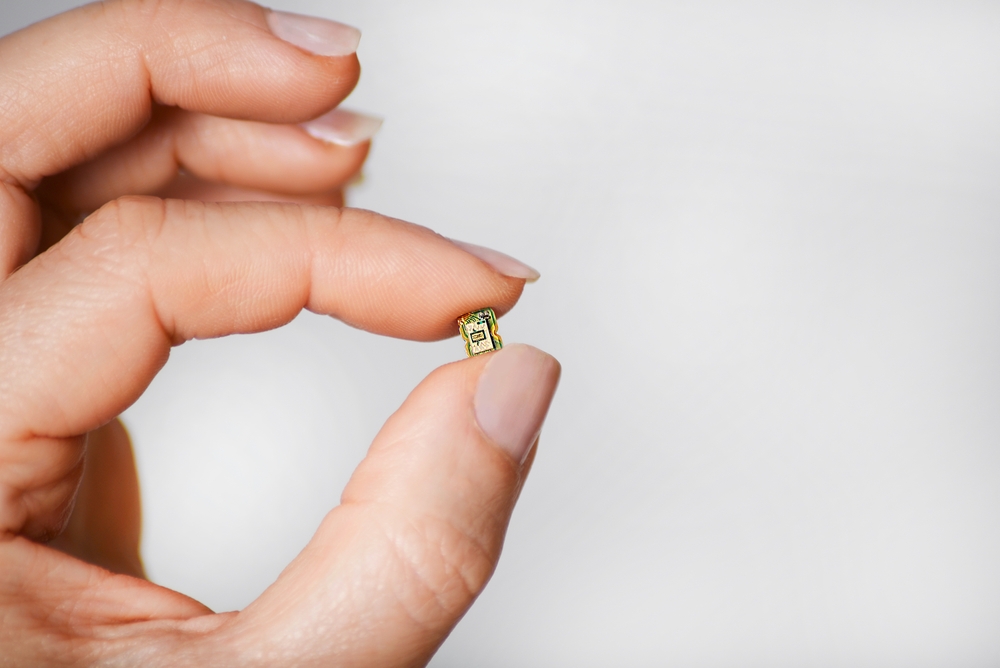
The Age of the Human Microchip: How Sweden Is Merging Technology with the Body
In Sweden, thousands of people have already taken a leap that feels straight out of a science fiction novel. They’ve chosen to have a tiny microchip inserted under their skin — a device capable of replacing ID cards, keys, train tickets, and even credit cards. What once sounded like a futuristic fantasy is now an everyday reality for many Swedes, signaling how quickly technology is reshaping human life and identity.
To outsiders, the idea might seem radical or even invasive. But in Sweden, it has caught on rapidly. Reports suggest that more than 3,000 Swedes have had the implants placed between their thumb and index finger. The chips, no larger than a grain of rice, let users access offices, gyms, public transport, and even make purchases with a simple wave of the hand. For many, it’s the next logical step in a world that already relies on contactless payments and digital identification.
A Nation Wired for Innovation
This movement isn’t a sudden phenomenon — it’s the product of Sweden’s long-standing embrace of innovation. The country is known for being a global leader in adopting emerging technologies, from cashless economies to renewable energy systems. The rise of microchip implants marks another bold step in seamlessly merging digital tools with daily life.
What’s most striking is not just the functionality of these chips, but the mindset of the people using them. Swedes tend to view the technology not as a threat, but as an extension of convenience, privacy, and personal freedom. In a society where 90% of transactions are already digital, embedding technology under the skin feels like a natural evolution rather than a dystopian risk.
How the Technology Works
The microchips used in Sweden are designed to be small, safe, and maintenance-free. They operate using Near Field Communication (NFC) — the same technology found in contactless cards and smartphones. When the chip comes close to a compatible device, it transmits stored data securely and instantly.
Implantation takes only seconds. A professional uses a syringe similar to those used for piercings to slide the chip under the skin, usually on the back of the hand. Once inserted, it becomes a permanent part of the body, requiring no batteries or upkeep, and can last for years without interference or discomfort.
Each chip can be programmed for various purposes — from storing ID information and digital business cards to holding train passes or payment credentials. Users can update the data themselves, making the chip a flexible, personalized digital key. Essentially, it acts as a bridge between the physical and virtual worlds, turning the human body into a living interface for the digital age.
Why Sweden Is Leading the Way
Sweden’s leadership in this movement stems from a unique cultural and social foundation. The nation’s deep trust in both its government and its technology sector has created fertile ground for such experiments. With one of the world’s highest rates of internet connectivity and digital literacy, citizens are accustomed to trying new tools that simplify life.
Start-ups like Biohax International, one of the pioneers in biohacking technology, have driven the microchip revolution by promoting it as both safe and empowering. Demonstrations at tech expos and public events have shown how effortlessly users can open doors, buy tickets, or log in to secure systems.
Culturally, Swedes also value efficiency, minimalism, and sustainability. Replacing plastic cards and paper tickets with a single reusable chip fits perfectly into the nation’s eco-conscious mindset. For many, it’s not only about convenience but also about reducing waste and streamlining everyday habits.
Addressing Privacy and Ethical Concerns
Still, not everyone is ready to embrace such intimacy with technology. The rise of implantable devices has sparked significant debate over privacy, data ownership, and the potential for misuse. Could future employers demand implants? Could governments track citizens through these devices?
Swedish developers have worked hard to address these fears. The current generation of chips cannot track location or transmit data without consent — they contain no GPS components and only activate when scanned at close range. They store minimal information, similar to a contactless card, and remain entirely under the user’s control.
Transparency has become essential to maintaining public trust. Companies emphasize voluntary participation and open disclosure of how the chips function, what data they contain, and what protections are in place. This open approach has kept the discussion balanced and focused on empowerment rather than surveillance.
The ethical questions remain profound. As technology becomes more embedded in the human body, societies must decide where to draw the line between enhancement and intrusion. Sweden’s experience may serve as a template for other nations navigating the same moral terrain.
The Everyday Benefits of Being Microchipped
For those who have already taken the plunge, the benefits are clear and immediate. Imagine unlocking your apartment, logging into your computer, or buying a train ticket — all with a wave of your hand. Many users describe it as liberating, eliminating the need to carry wallets or keys and reducing the anxiety of losing important items.
Businesses are also exploring the potential of implant technology. Offices use chips for secure building access, while fitness centers allow members to open lockers and log workouts seamlessly. In healthcare, researchers envision chips that could store medical histories, allergies, or emergency contact information, helping doctors save precious time in critical situations.
As technology improves, more advanced uses are emerging — from digital vaccination verification to integration with smart home systems. Some futurists imagine chips capable of tracking vital signs or monitoring chronic health conditions, blending medical science with everyday convenience.
A Glimpse of Human Evolution?
The integration of microchips into the human body prompts a profound question: are we witnessing the early stages of technological evolution? Many Swedes see this as a redefinition of what it means to be human in the digital era — not a surrender to machines, but a partnership with them.
Sociologists describe this phenomenon as the dawn of the “cyborg society,” where technology doesn’t merely assist human life but becomes interwoven with it. Smartphones and wearables have already blurred the boundary; subdermal chips simply take the relationship one step further.
This transformation raises new philosophical challenges around autonomy and control. Yet for many users, the implant symbolizes empowerment — a tool that enhances human ability rather than diminishes it. It’s a quiet revolution where technology disappears beneath the skin but reappears in every moment of convenience.
Reflecting on a Tech-Driven Tomorrow
Sweden’s experiment offers a glimpse into a possible future for the rest of the world — one where human and machine integration becomes normalized. Whether this trend spreads globally will depend on how societies balance innovation with ethics, and convenience with consent.
What’s certain is that the future is approaching faster than expected. The Swedish experience shows that when trust, transparency, and innovation coexist, bold ideas can become everyday reality. As technology continues to advance, the question is no longer whether humans will merge with their creations — but how far they are willing to go.
Ultimately, this story isn’t just about microchips or data. It’s about people, progress, and the choices that shape our shared future. And as Sweden leads the way, the rest of the world watches — wondering whether the next great leap in human evolution might begin with something as small as a grain of rice.





































